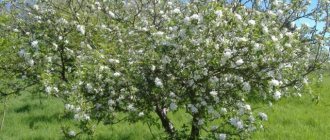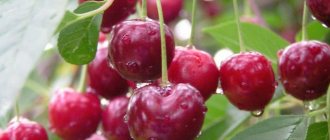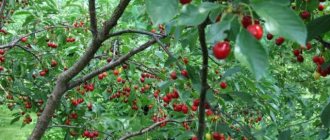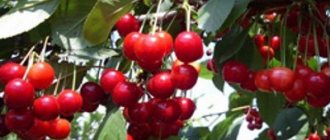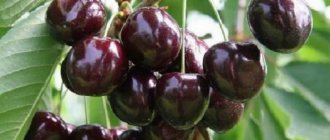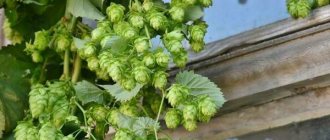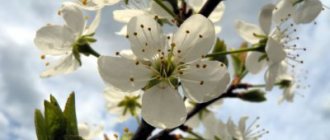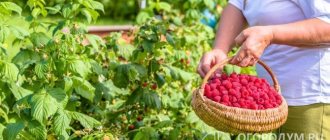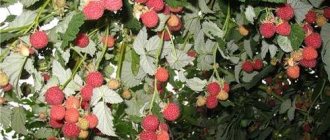Dessert Morozovaya cherry - what kind of variety is it
Morozovka cherry, as it is often called, is a young variety included in the State Register of Breeders' Achievements in 1997.
The variety was named in honor of the author, Candidate of Agricultural Sciences T.V. Morozova.
Main characteristics of culture, advantages and disadvantages
Description of the Morozovka cherry variety and characteristics:
- Frost resistance. The species is recommended for planting in the Central Chernozem region. It overwinters without shelter and withstands frosts. However, for example, it will not take root in the Northern region.
- Drought resistance. Drought resistance is average: in hot summer weather, trees need to be watered no more than 2 times a month.
- Productivity. With proper care, the yield from one tree is up to 40 kg of berries.
Important! If the Morozovskaya cherry freezes at least once, it will not be able to fully recover.
Morozova cherry, like any other species, has both advantages and disadvantages.
Advantages:
- early harvest;
- regular fruiting;
- mild berry taste;
- one-dimensionality of fruits;
- high level of pest resistance;
- no special requirements for harvesting;
- partial self-fertility.
Flaws:
- in an infected garden plot, the tree has low resistance to coccomycosis;
- exposure of old branches;
- the best pollinators are griots, which is bad for a small garden.
The fruit tastes like cherries
Growing Tips
Growing this dessert variety is quite simple. The main recommendations are as follows:
- Landing takes place in well-lit, windless places, if near a building, then, of course, on the south side;
- Saplings are selected by boys under 2 years of age;
- The diameter of the fountain for a young plant with a diameter of at least 80 cm should be;
- If loamy soils predominate in the area, then sand, a bucket of which must be placed in each well, will help unload it;
- After planting, the plant is watered and mulched generously.
Plant material takes root in early spring until the buds open.
In the first year after landing, they begin to form a crown. Cherry trees are also removed by pruning damaged, weakened and diseased branches. In autumn, mineral fertilizers are applied to the area adjacent to the land. The biological agent is applied every two to three years.
What does the Vianok cherry look like in this video?
Page 2
Translated from Latin, the name cherry means “cherry tree.” Because not only people, but also birds appreciated the taste of these berries. Only in Russian, cherries and cherries have different names; in English-speaking countries, the berries have the name -, only cherries are marked with the nickname “sour”, and cherries - “sweet”.
But besides the sweetness of the taste, cherries have two more important benefits:
- Cherry trees are harvested every year, and they do not have fruit periodicity like cherry trees;
- On average, sour cherries produce twice as many berries as sour cherries - up to 25 kg per tree.
There are many different varieties of cherries, in this article we will focus on one of the most popular varieties of black candies.
History of selection and region of breeding
For the first time, Morozova dessert cherries, the description of which is included in the State Register, were presented in 1997. The author is Morozova Tamara Vasilievna.
To create cherries, the Vladimirsky variety, already popular at that time, was chosen, the seeds of which were treated with the mutagen chemical ethyleneimine during selection.
The variety is suitable for cultivation in the Central Black Earth region.
The variety is suitable for growing in warm regions of the country
Description of culture
The height of the Dessert Morozova cherry tree can reach 3 m. The crown is spreading, oval, and sparse. Straight branches become bare with age. On the trunk and old branches the bark is light brown. The tree grows intensively.
Large cherry buds are strongly deviated from the shoots. Large matte leaves are light green, obovate, with a jagged edge. The petiole is of medium thickness and length, with anthocyanin color throughout.
The flowers are large and white. Early ripening berries are large, round, weighing up to 3.7 g (with good agricultural technology - 4.7 g). The ventral suture is almost invisible, and there is a small depression at the apex. Like other griots, the fruit, pulp and juice are dark red. The berry is soft, juicy, tender, medium-sized seed. It contains a lot of sugar and little acid, the taste rating is 4.6 points. Fruiting occurs on annual growth.
The variety is recommended for cultivation in the Central Black Earth region.
The main advantages of the variety are:
- taste qualities of berries with a rating of 4.7 on a five-point scale;
- good frost resistance;
- early ripening of fruits;
- resistance to many types of diseases.
Morozova’s dessert is not ideal and has some disadvantages:
- requires careful attention to the crown and periodic thinning;
- moderately resistant to coccomycosis.
Thanks to the above qualities, the demand for Dessert cherries among amateur gardeners remains at a high level every year.
Techniques for growing columnar cherries, planting and subsequent care
To grow a columnar variety, you need to start by selecting and purchasing seedlings. It is best to purchase them from garden centers or nurseries that have a good reputation. Before purchasing, you must inspect the tree. You should choose seedlings that have:
- an even trunk with a smooth crown;
- intact bud of the apical shoot;
- root system without signs of suppuration;
- healthy foliage.
The landing technique is presented below.
Selecting a location
The place where the cherry tree will be located should receive sunlight, so for planting you should choose the south side of the garden plot.
If possible, it is better to plant behind buildings that will protect the trees from gusty winds. Regular contact with water is detrimental for the variety: groundwater on the site must pass at a depth of at least 2 m.
Planting period
A seedling whose root system is open is planted in the spring. Seedling in a container - from March to September.
Preparing the site
A hole for planting is prepared in advance: size 80 cm and depth 60 cm. A mixture of bait is added to the planting hole:
- humus 1:1 to the soil removed when digging a hole;
- potassium chloride - 20 g;
- superphosphate - 30–40 g.
Planting a seedling
Technique:
- The seedling is placed in a prepared hole and covered with soil.
- The soil is compressed, forming a hole for subsequent watering.
- 2 buckets of water are poured into the hole.
- When the soil dries out after watering, mulch with a layer of peat, sawdust or humus.
Trees should be planted in the spring
Aftercare
In the first growing season, it is necessary to water the seedling well, and after the soil dries, loosen it to provide oxygen access to the roots.
Morozova's dessert cherry loves nitrogen and potassium, but it needs phosphorus in minimal quantities. With the onset of September, the tree trunk circle should be mulched with cow or horse manure with the addition of a small amount of ash.
An important stage is the application of fertilizers: nitrogen is applied in the spring, and potassium and phosphorus in the fall.
Important! Pig manure cannot be used for feeding purposes.
To stimulate fruiting, pruning is required. Branches older than 2 years are shortened.
It is impossible to prune during the annual growth.
In warm regions, there is no need to cover cherries for the winter. You just need to wrap the trunk with straw, burlap or spruce grass to protect it from hungry rodents.
Chemical composition of the fruit
You can recognize Morozova’s dessert cherry by the following features:
- The height of an adult tree is approximately 3 m. Some specimens reach 3.5 m in height, but this parameter does not affect the yield;
- The crown shape is spherical, with dense spreading branches. To maintain the correct shape of the crown, it is necessary to carry out timely pruning;
- Leaf color is light green. The surface is matte. Sudden darkening and deformation of leaves may indicate a nutrient deficiency;
- The leaf shape is ovoid.
During flowering, the plant produces a large number of small white flowers with a pronounced sweet aroma. The flowers have round petals; several flowers form one inflorescence.
Large cherry fruit
Resistance to adverse factors, diseases and pests
Like other varieties, Morozova dessert cherries are affected by diseases and pests. Coccomycosis is especially dangerous: the species is resistant to the disease, but only if there are no infected trees nearby.
To protect cherries from coccomycosis, you should process them in a timely manner:
- A mixture of ash, salt and soap (6:1:1) diluted in boiled water (10 l). Treatment is required with the onset of spring.
- Iodine solution (10 ml/10 l of water). The procedure must be carried out 3 times during the flowering period every 3 days.
- Potassium permanganate solution (5 g/10 l of water). Spray the crop during, after flowering and in the fruiting phase.
Another dangerous disease is moliniasis. Externally, a tree infected with moliniasis appears to have suffered from high temperatures, resulting in the flowers wilting and the branches drying out.
To cure a tree, it is necessary to prune off the infected branches, while capturing some of the healthy tissue. Then lubricate the wounded surface with garden varnish and spray it three times with a copper-containing fungicide at intervals of 2 weeks.
This variety perfectly resists pests such as aphids and cherry sawfly.
The variety is highly resistant to diseases and pests
Reviews from gardeners
Fairy tales are becoming increasingly popular among summer residents and gardeners. If you carefully study their reviews of this variety, you will see that almost everyone notes qualities such as this:
- modesty and high vitality of seedlings;
- possibility of growth in the middle zone;
- high cold resistance;
- early harvest;
- high yields;
- excellent taste and high demand in the market.
Review of the best varieties of cherries: ://6
/12345555321/1234555321/12341/12345555555555-Cherry.1234525525555555555555551212341-Cherry. ://612345321/123444445551-55555.
On average, the lifespan of the variety and the shelf life of the fruit varies from 90 to 110 years. The fruits are well tolerated and stored frozen.
Red shoes: what to wear and what to avoid (46 photos)
In this video you will learn how to properly trim a one-year cherry tree:
Page 5
There are more than 3,000 varieties of cherries in the world.
Trees live and bear fruit for a long time. With good care, cherries can delight more than a generation of gardeners; there are signs of fruit-bearing trees that are up to a hundred years old.
Cultivated varieties differ in the flowering period and fruit formation, frost resistance of trees, their height and crown shape. Berries have different tastes and look different: Color, shape, length of stems.
A beginner who decides to plant trees on a plot should consult in advance with specialists in the selection of the selected variety. And we will try to describe the characteristics that you should look for before purchasing planting material for your property.
Features of wintering a tree
For a comfortable winter, it is necessary to fertilize with fertilizers, which include potassium and phosphorus. After applying the bait, water the cherries.
Also an important step is autumn whitewashing, which will prevent pests from infesting the bark, as well as cracking and subsequent freezing.
Young seedlings can withstand winter cold more easily if they are covered with agrofibre on top.
Morozova dessert cherries are ideal for growing in warm regions of the Russian Federation. It is only necessary to process the trees in a timely manner and then the yield level will exceed all expectations, and the sweet fruits will become an ideal ingredient for compotes and jams.
Harvesting
Cherry seedlings
Spraying cherries
There are several harvesting methods. You can pick berries without cuttings. If the berries are intended for long-term storage and preservation, it is better to pick them with cuttings. And finally, for convenience and speed of harvesting, if there are a lot of cherries, it is best to cut them with garden shears.
